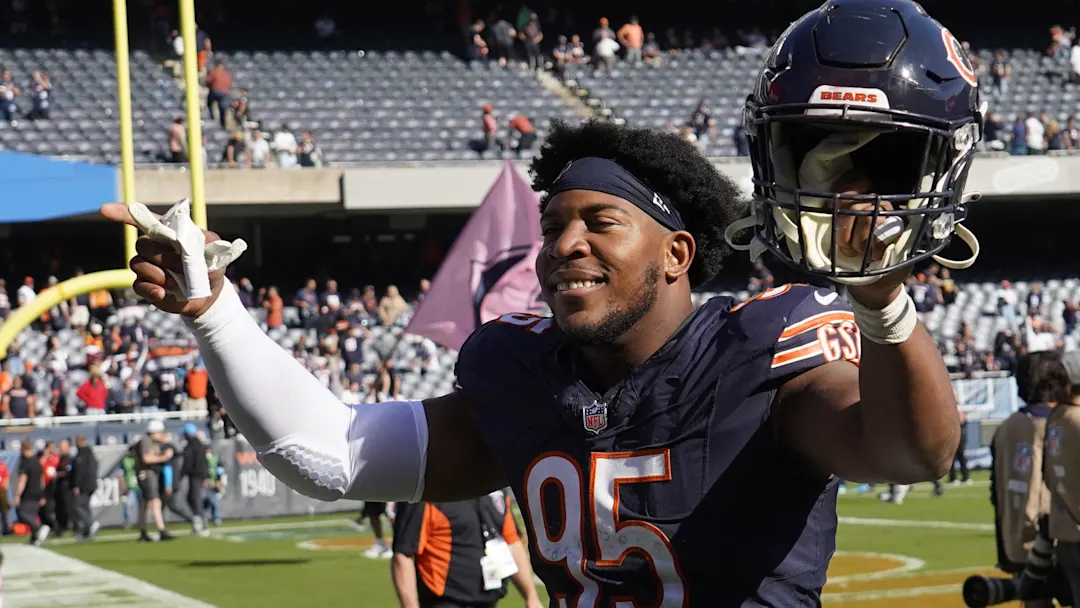The Arizona Cardinals have made another move to patch a glaring hole on their roster—but instead of a splash, the team made a ripple. As offseason buzz swirls around blockbuster trades and top-tier free agent signings, the Cardinals have taken a different, more confounding route. With a glaring need at [insert key position—e.g., cornerback, defensive line, offensive tackle], Arizona opted to sign [insert name of underwhelming free agent], a journeyman veteran whose recent résumé raises more questions than answers.
It’s not the kind of move that inspires confidence in a team trying to rebuild its identity. After finishing near the bottom of the league in several statistical categories last season and shedding several big contracts in favor of youth and cap flexibility, Cardinals fans hoped the franchise would use its ample cap space and draft stock to reload with talent capable of making an immediate impact.
Instead, Arizona appears to have gone bargain-bin shopping for one of the most critical spots on the roster.
[Free agent’s name] isn’t necessarily a bad player. But he’s not the answer—at least, not the one the Cardinals faithful were expecting. A former [insert teams], he’s bounced around the league as a depth option, sometimes starting out of necessity rather than dominance. Last season, he appeared in [insert games played], recording [insert modest stats]—respectable numbers, but hardly game-changing.
For a Cardinals team that finished [insert previous season’s record], the pressure to improve in a meaningful way has been mounting. The NFC West continues to be one of the more competitive divisions in football, and with the 49ers in a Super Bowl window and the Rams reloading quickly, Arizona doesn’t have time to waste. Yet this latest move suggests a franchise that’s either playing the long game or simply lacks a coherent plan.
Cardinals GM Monti Ossenfort defended the signing in a brief media session, stating, “We see [player name] as someone who can contribute right away. He brings experience, leadership, and toughness—traits we value highly in this locker room.” While that’s the standard company line when bringing in a veteran, it doesn’t exactly address the elephant in the room: this team needs difference-makers, not placeholders.
What makes the signing even more frustrating for fans is the sheer number of more impactful free agents still on the market at the time of the move. Proven talents like [insert names of other available players at the same position] were available—albeit at a higher price tag. Arizona had the resources to make a more aggressive play, but opted instead for what seems to be a low-risk, low-reward move.
It’s a pattern that’s become all too familiar in recent seasons. After the excitement of the Kyler Murray era began with high hopes and playoff aspirations, the Cardinals have regressed into a team that feels stuck in neutral. Injuries, questionable coaching decisions, and inconsistent front office direction have all contributed to the malaise. And while first-year head coach Jonathan Gannon brings a fresh voice and defensive pedigree, he can only work with the players he’s given.
That’s where the frustration lies.
Rather than aggressively building around Murray—who is finally healthy and entering a critical stage of his career—Arizona appears to be hedging its bets. Signings like this one send mixed signals: is this a team trying to compete now, or simply waiting for a bigger window to open in a year or two?
Gannon, for his part, echoed the front office’s optimism about the new addition. “We believe [player name] fits into the culture we’re trying to build here. He’s tough, he’s smart, and he’s versatile.” That may all be true—but versatility without high-level production doesn’t move the needle in a division where every roster spot matters.
If there’s a silver lining, it’s that the contract is reportedly team-friendly. According to initial reports, the Cardinals signed [player name] to a [insert number]-year deal worth around [insert amount], with minimal guaranteed money. That kind of flexibility could make it easier for the team to move on if the experiment doesn’t pan out—but it also speaks volumes about the level of expectation.
Still, it’s hard to ignore what this move signals. The Cardinals may be trying to avoid overcommitting to players they don’t fully believe in—and there’s some logic in that. But playing it too safe can be just as dangerous. While other teams make bold plays to upgrade premium positions, Arizona is spinning its wheels with fringe contributors.
Fans took to social media quickly to vent their frustrations. Comments ranged from “This has to be a joke” to “Same old Cardinals—scared to spend, scared to win.” And while social media hot takes don’t always reflect the full picture, it’s telling that the overwhelming reaction was confusion or disappointment rather than excitement.
There’s still time for the Cardinals to change the narrative this offseason. With the NFL Draft approaching, Arizona holds multiple picks and has the chance to inject much-needed youth and talent into the roster. But this free agent move doesn’t exactly instill confidence in their ability to identify and target true difference-makers.
Even within the locker room, there’s likely a level of quiet unease. Veteran players want to win now. Young players want to be developed and surrounded by talent that allows them to grow. A stopgap signing may fill a spot on the depth chart, but it doesn’t bring clarity or direction. It’s a short-term fix for a long-term problem—and it doesn’t address the deeper issue of whether Arizona’s front office is committed to turning things around in a meaningful way.
Some analysts have floated the idea that the Cardinals are simply playing the long game. With 2025 shaping up to be a potentially franchise-altering draft class, it’s possible the team is positioning itself for a bigger reset. But if that’s the case, it raises even more questions about the purpose of moves like this one. Why patch a hole with an underwhelming veteran if you’re not truly trying to compete this year?
The reality may be that Arizona is caught in between—too far from contention to justify major investments, yet unwilling to tear it down completely and start over. That’s a tough spot for any team to be in, and navigating that middle ground requires a level of strategic clarity that the Cardinals haven’t consistently demonstrated in recent years.
Ultimately, this move will likely fade into the background of a long offseason. But it stands as a symptom of a larger issue—a franchise without a clear direction, making low-impact moves in high-stakes moments. And unless the Cardinals find a way to course-correct soon, they may find themselves falling further behind in a division that won’t wait for them to catch up.
Arizona’s fans deserve better. Kyler Murray deserves better. And Jonathan Gannon, still trying to make his mark as a first-time head coach, deserves a front office willing to give him the tools to compete.
For now, the message is loud and clear: the Cardinals have a plan. The only problem? No one’s quite sure what it is.



